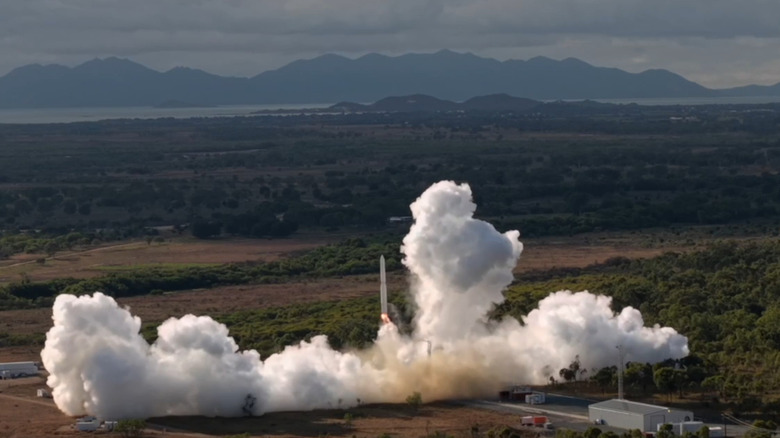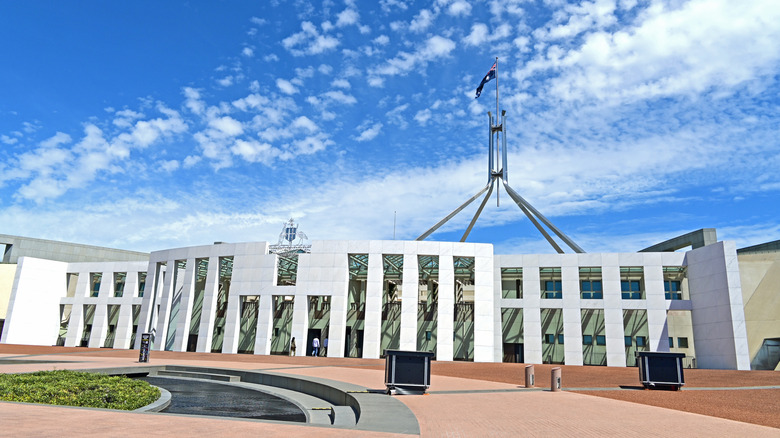
Rocket science being difficult is more than a comedic cliché. It's as hard as President Kennedy said it was in the early 1960s. Gilmour Space took Australia's first orbital rocket to the launch pad for the first time on Tuesday. However, the private company's Eris rocket lifted off and survived for only 14 seconds before smashing into the surface. Just like Starship-trashing enterprise SpaceX, Gilmour touted the failed launch as a learning experience to improve for the second test flight.
When Eris-1
lifted off the pad in Queensland, it quickly became clear that the rocket wasn't going to orbit or even high enough to potentially disturb a passing airliner. On a launch livestream, the rocket barely cleared the tower before it slowed and started hovering. Eris-1 slid sideways off the pad, then sank below the tree line. While the actual crash wasn't visible, the telltale plume of smoke told everything we needed to know. Adam Gilmour, CEO of Gilmour Space, said:
"Getting off the pad and into flight is a huge step forward for any new rocket program. This was the first real test of our rocket systems, our propulsion technology, and our spaceport — and it proved that much of what we've built works.
Clearing the tower was a major milestone for our team. It showed that Australia can design, build, and launch rockets right here at home."
Read more: These V6 Engines Put The LS1 V8 To Shame
Australia Has Nearly $13 Million Riding On This Rocket

Space was solely the domain of nations in the 20th century. It still is in this century. Governments are just paying private companies to do it on their behalf. Australia has a lot riding on the success of Gilmour Space. The country's defense department awarded Gilmour a $9.7 million contract in 2022 to develop a military satellite. That satellite was supposed to be put in orbit by an Eris rocket in 2023. The Australian government put another $3.2 million into the Eris rocket's development last week.
Britain is also trying to join this 21st-century space race with similar results. The SaxaVord Spaceport, the country's first vertical launch site, opened last year in Scotland. Just a few months later, a rocket engine exploded on the pad during a test. SaxaVord has yet to host a launch. Spaceflight is an extremely exclusive club. There are only six countries with the capabilities to put objects into orbit: the United States, China, France, India, Japan and Russia. Dozens of other nations might have space agencies, but they are just providing expertise to the six heavy rocket-launching powers.
Want more like this? Join the Jalopnik newsletter to get the latest auto news sent straight to your inbox...
Read the original article on Jalopnik.












